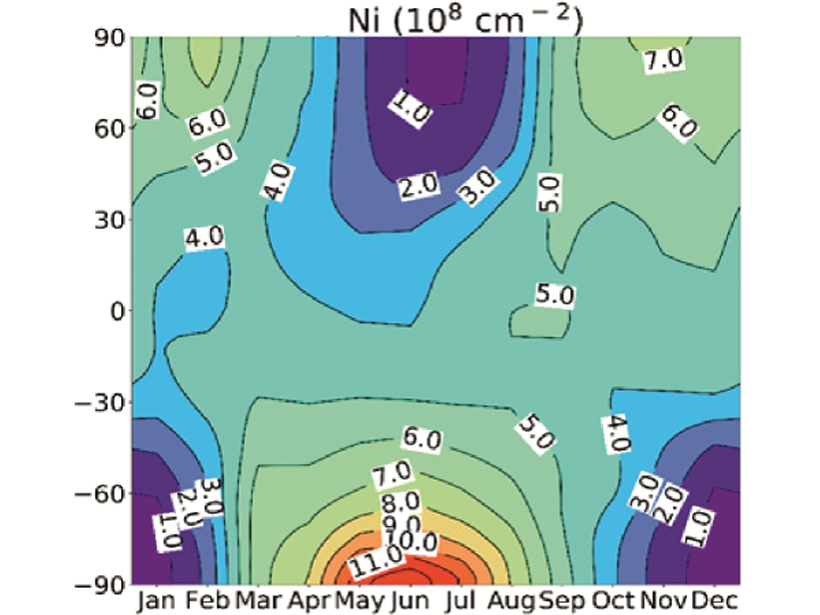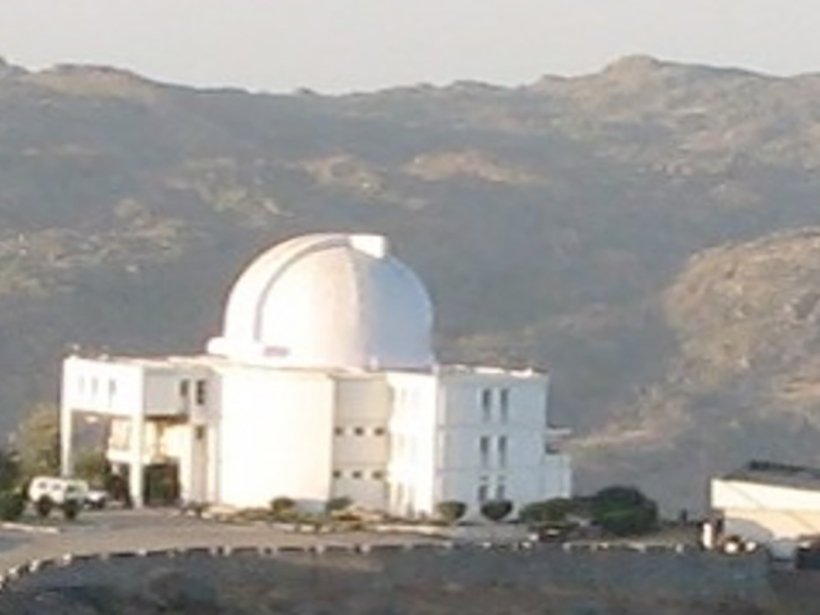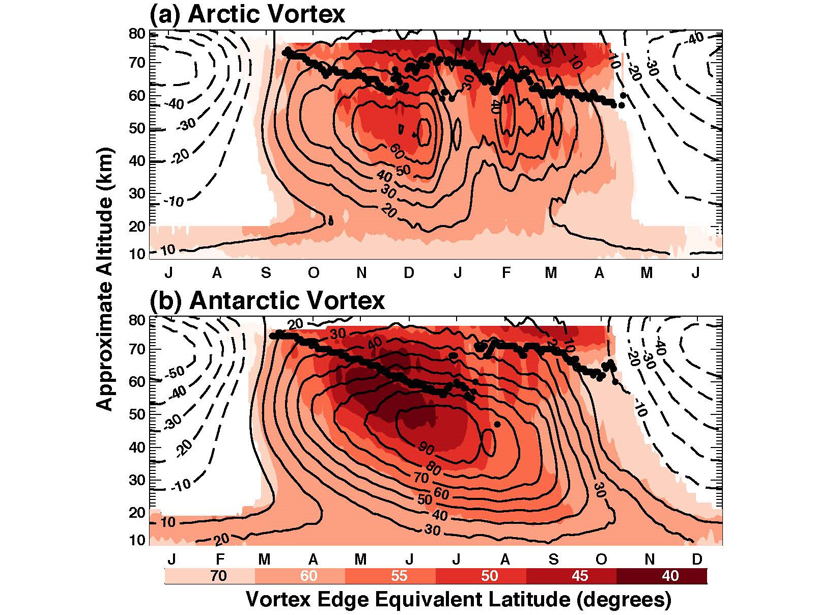The auroral feature, first spotted by amateur astronomers in 2015, likely traces high-altitude atmospheric waves.
mesosphere
An Observational Gap at the Edge of Space
Ongoing climate change in Earth’s middle and upper atmosphere will affect the rapidly expanding space and telecommunications sectors. Maintaining observations of this region is more crucial than ever.
Stratospheric Weather Impacts Light Species at Great Heights
Sudden stratospheric warmings in the high latitude wintertime can drive changes in light species (H, He and O) all the way though the thermosphere, likely influencing ion densities in the exosphere.
First Model of Meteoric Nickel in the Upper Atmosphere
A layer of nickel of cosmic origin, which exists between 80 and 110 km high in Earth’s atmosphere, has been modeled for the first time, including dynamics and complex neutral and ion chemistry.
The When and Where of Mesospheric Bores Revealed
In a new study, the enigmatic gravity waves were seen most frequently at equatorial latitudes and propagating from the winter to the summer hemisphere.
Polar Vortex Deformations Change Tidal Weather in the Mesosphere
Wind observations made by a high-latitude radar network shed new light on the rapid response of atmospheric tides in the upper mesosphere to stratospheric sudden warmings.
What Drives Temperature Inversions in the Mesosphere?
A study of nightglow over India reveals that gravity waves are less important than previously thought.
New Lidar Comparisons of Temperatures Near the Mesopause
For the first time, simultaneous measurements of upper atmosphere temperatures over altitudes 80 to 110 kilometers have been made by two complementary lidar techniques.
Energetic Electrons Can Penetrate the Stratosphere
Precipitations of electrons with energies greater than 30 kiloelectron volts from the slot region penetrate at low altitude and can contribute to destroy ozone.
New Characterization of the Mesospheric Polar Vortices
Polar vortices play a central role in coupling the atmosphere from the ground to the middle atmosphere. New satellite diagnostics describe mesospheric polar vortices and coupling to lower altitudes.



![Two plots showing percent changes in TIME-GCM zonally averaged [O+] and [H+] as a function of latitude and altitude in the Northern Hemisphere between the “disturbed” and “pre-disturbance” time periods in 2012–2013](https://eos.org/wp-content/uploads/2020/12/2020JA028331-Figure-12-top-row-with-legend-sized-for-Eos.png)






